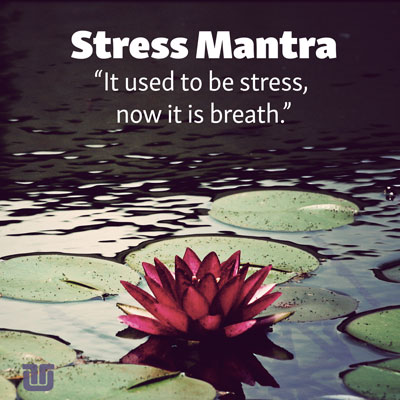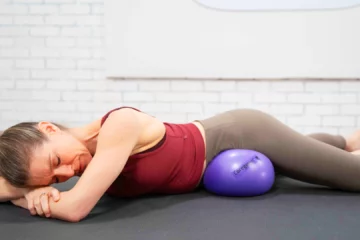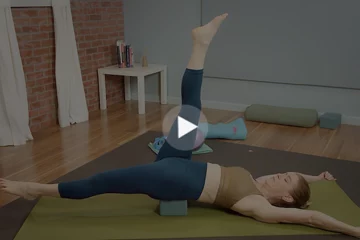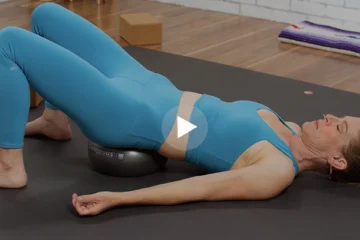
Feeling stressed?
You’re not alone. In just one year the percentage of Americans that reported at least one stress symptom per month rose from 71% (2016) to 80% (2017) *1. Which makes so much sense! It’s easy to understand how increasing concerns about the future of the economy, gun violence, terrorism and even the positive motivation to get ahead at work can add up.
“We know that chronic stress can take a toll on a person’s health. It can make existing health problems worse, and even cause disease, either because of changes in the body or bad habits people develop to cope with stress. The bottom line is that stress can lead to real physical and emotional health consequences,” said Katherine C. Nordal, PhD, APA’s executive director for professional practice. *1
So, what is the best exercise for stress relief?
Remarkably, the best natural stress relief is in our power—your breath. We’ll get into breathing exercises to reduce stress and anxiety, but first it helps to understand the mechanics of breathing and how it triggers a response from the body without you even realizing it!
To begin, it’s helpful to remember that stress itself isn’t negative, its primary purpose is to prepare the body for action. It can be used to avoid a threat or a more motivating type of stress, such as meeting a work deadline. Generally, these types of stressors activate the “fight or flight” response, also called the sympathetic nervous system (SNS). Too much stimulation of the SNS can lead to headaches, the feeling of being overwhelmed, shortness of breath and eventually chronic illness.
Why Breathing is Good for Stress
The sympathetic nervous system doesn’t work alone though. It’s actually one of two nerve compositions that make up the larger autonomic nervous system from which our unconscious body functions operate.
Deliberately moving the diaphragm–the primary breathing muscle–induces a natural sedative and is one of the most tranquil practices for the body. The parasympathetic nervous is responsible for the “rest and digest” response. Taking deep breaths is the key to activating this part of the response system.
This will prompt the body to enter a state of down regulation. This is the body’s version of a sedative–the best part? There are no nasty side effects.
3 of the best breathing exercises for stress reduction
-
3 Step Breath from Yoga Tune Up®
- Place a bolster or pillow under the knees as you lie down. Make sure your shoulders are away from the neck and palms are faced toward the sky. Still your body.
- Start by exhaling the breath out completely.
- Inhale, and pause. Hold your breath.
- Continue to inhale, and pause.
- Complete your inhale, and pause.
- Exhale completely.
- Repeat.
-
Equal breathing
- Inhale to a count of four through the nostrils.
- Exhale to a count of four.
- Increase to counts of six or eight.
Breathing through the nose is difficult, take your time and work up to increased times.
-
Diaphragmatic Breathing or abdominal breathing
This exercise utilizes the “heart” of your respiratory system: the diaphragm.
Lie down in a comfortable supine position. Place one hand on your stomach and one on your upper chest. Inhale, filling the bottom of your stomach… Upon exhale, make sure to expel as much air as possible while activating the core for assistance. Aim to keep the hand on your chest as still as possible and just isolate the abdomen. You will feel your stomach rise and fall.
Freely experiment with different patterns of breath. Tune in to your body to sense how you feel after each different technique–including techniques you invent yourself. With increased practice you will train your respiratory muscles to respond to stress in a therapeutic and natural way. This means you will be able to respond more consciously to whatever happens to be stressing you out.
Liked this article? Read Easing Out of Illness













Breathing is so important! These exercises are great for learning how to control your breath. I have used similar techniques with my swimmers. It really is eyeopening to see how many (basically) adults have never controlled their breath. They have lived their entire lives just breathing normally, they’ve never actually experimented with holding their inhales and exhales…when and how you breathe can either excite or depress us. It really is an underutilized/underunderstood easy and cheap way to regulate yourself. We should all be doing more of these types of exercises.
I love the YTU 3 part breath. It truly illuminates how I do not use my full lung capacity on a day- to day basis. After doing this breath my diaphragm feels more open and I have much more clarity of mind and energy.
Excellent reminder on the breath and how it can be our guide to relaxation. To often we breathe shallow or hold the breath creating more stress.
Awareness of breath, taking control of breathing and not letting your breath control you is such a vital part of stress management. I will use these in my classes. Thanks!
Here are some exercises that should be introduced early in young children so that they become adults who know how to breathe!
They will have better control over their daily stress and thus reduce their risk of chronic illness! And the DNA will follow!
I really appreciate these simple, clear and direct techniques. I think any one of these could be a very effective way to start a class, to bring students into their body, without getting overly technical.
Breath work has helped me a lot in calming panic/anxiety attacks. I would be interested in learning more about how to master and calm anxiety when it is at it’s highest level. The times when one cannot even get to a place where you can focus on your breath.
In yoga, breath is an indicator of prana or life force and I am a firm believer in the power of conscious breathing. Before teaching yoga, I studied Musical Theatre and as a singer/actor, we spend years developing an awareness of our breath because breath affects everything from your posture to the tone of your voice. Starting any type of creative work with a couple of collective breaths or just bringing awareness of the breath in general makes such a difference as far as setting the tone and almost acts like a ‘reset’. Breath is something that is both universal and intimate and I love being able to effect myself by simply paying attention to an act that is both simple and subconscious but also intrinsically connected to our beings/consciousness.
Love the Mantra and the different breathing exercises given here. Most importantly for me as a teacher, I love the explanation of why this is good and how these exercises can help those who need it. People come to yoga, often, to help them manage a stressful life. This is a gift we as teachers can give them to take and use off the mat as well. Thank you!
I’ve only more recently come to discover how useful breathing exercises are in reducing stress and eliminating tightness in my shoulders and chest. These are some effective guides for me to use.
Love the mantra!! Breathwork changed my life, but along the way, I’ve become hooked on ujayi. Thank you reminding by sharing these great down regulating techniches. It is said “where the breath goes, the mind follows. Tonight, I plan to slow it all down.
Thank you for explaining these three types of breathing. I’ve recently started exploring my breathing patterns during different types of circumstances/experiences that I encounter and have found that I am indeed impacted by my breathing patterns. Legs up the wall belly breathing is my “go to” for getting to sleep.
Great reminder that diaphragmatic breathing is a stress buster…and I can’t believe that there is only 80% of one stress symptom per MONTH. This is a daily dose of good medicine for me!
Thank you!
Thank you for sharing , Stephanie! I really like the stress mantra ” it used to be stres, now it is breath”.